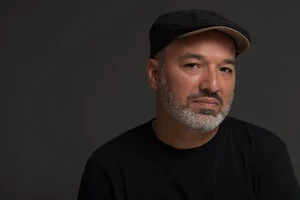Saz
TURKISH FOLK INSTRUMENT
INSTRUMENT INFORMATION
The saz, which comes from Turkey, is a member of the string family of instruments. It has seven strings, divided into courses (another word for smaller groups of strings) of two, two, and three strings. You play the saz by strumming or plucking the strings with one hand while the other hand presses down the strings at different positions along the neck to change the pitch of the notes. This instrument is commonly heard in Turkish folk music, but similar instruments can be heard in parts of southeastern Europe and the Middle East.
MEET THE INSTRUMENT
In the following video (1:50), Dr. Ozan Aksoy presents the saz, and details how this instrument is constructed and how it makes sound. This video can be enjoyed along with your children in class:
After watching the video, you can engage the children in discussion about what they remembered or noticed about the saz. Children may share ideas about other instruments that it reminds them of, or other music or sounds that they have heard before. Some questions that may initiate a discussion:
Do you remember some of the names of the parts of the saz?
What did Ozan do to make sound on the instrument?
What is the saz made of?
Does this remind you of any other instruments that you have seen before?
MUSIC
In the following videos, Ozan performs several traditional pieces on the saz. You may choose to play these videos together in the same class session, or play them over several days to create multiple music experiences for the children.
With each experience, you can watch and listen along with the children. While listening, you may notice that the children move their bodies along with the music, and naturally show what they hear through bouncing, clapping, dancing, patting their legs, or almost any other movement that you can imagine! This is part of their music learning, and you can encourage them to move while they listen.
After you watch and listen to each video, depending on the age of the children, you may initiate a discussion about what they heard and saw. Children often feel more comfortable contributing if the questions are specific; abstract questions (such as “how did it make you feel?”) may be difficult for the young child to answer. Some questions that you may consider are:
Was the music fast or slow? Loud or soft? Smooth or choppy? (etc.)
Did you hear any words that you have heard before? Did you hear any new words?
Did this song remind you of other songs that you’ve heard before?
What kinds of movements did you make when you were listening?
And, after you have listened to all three pieces, the children may be able to make comparisons:
What was the same about these songs? What was different?
Listening Experience #1 (1:47)
Ozan shares a folksong from Turkey, called Şeker Oğlan, which means “Sugar Boy.”
Listening Experience #2 (2:32)
Ozan shares a traditional song called Üsküdar, which is about the city of Istanbul, Turkey.
Lyrics:
Üsküdar'a gider iken aldı da bir yağmur.
Kâtibimin setresi uzun, eteği çamur.
Kâtip uykudan uyanmış, gözleri mahmur.
Kâtip benim, ben kâtibin, el ne karışır?
Kâtibime kolalı da gömlek ne güzel yaraşır!
Üsküdar'a gider iken bir mendil buldum.
Mendilimin içine (de) lokum doldurdum.
Kâtibimi arar iken yanımda buldum.
Translation:
On the way to Üsküdar, rain poured down.
My clerk's frock coat is long, with its skirt muddied.
It seems the clerk just woke up, his eyes are languid.
The clerk belongs to me, I belong to the clerk, what is it to others?
How handsome my clerk looks with starched shirts!
On the way to Üsküdar, I found a handkerchief.
I filled the handkerchief with Turkish delight.
As I was looking for my clerk, I found him next to me.
Listening Experience #3 (2:12)
Ozan shares a lullaby called Dandini.
Lyrics:
Dandini dandini dastana
Danalar girmis bostana
Kov bostanci danayi
Yemesin lahanayi
Eee Eee Eee Eee
Translation:
Dandini dandini dastana
The calves are in the vegetable garden
Chase those calves away
They don’t eat cabbages
Eee Eee Eee Eee
ABOUT THE MUSICIAN
Born in Turkey, Ozan Aksoy grew up in a multilingual household where music was always present. Ozan then developed an interest in music and began learning the saz, a long-necked lute. In college, he performed with a re-known music group called Kardes Turkuler (Ballads of Solidarity), and then he came to the U.S. to do a doctorate in ethnomusicology. Ozan is currently a faculty member at NYU, where he teaches world cultures and the Middle East. He has extensive experience in musical arts and especially in the cross-section of music and education. Dr. Aksoy is also a Summer Music Partnership Program faculty member at Diller-Quaile, and a guest artist in the Early Childhood Department. You can hear his music at ozanaksoy.hearnow.com.

